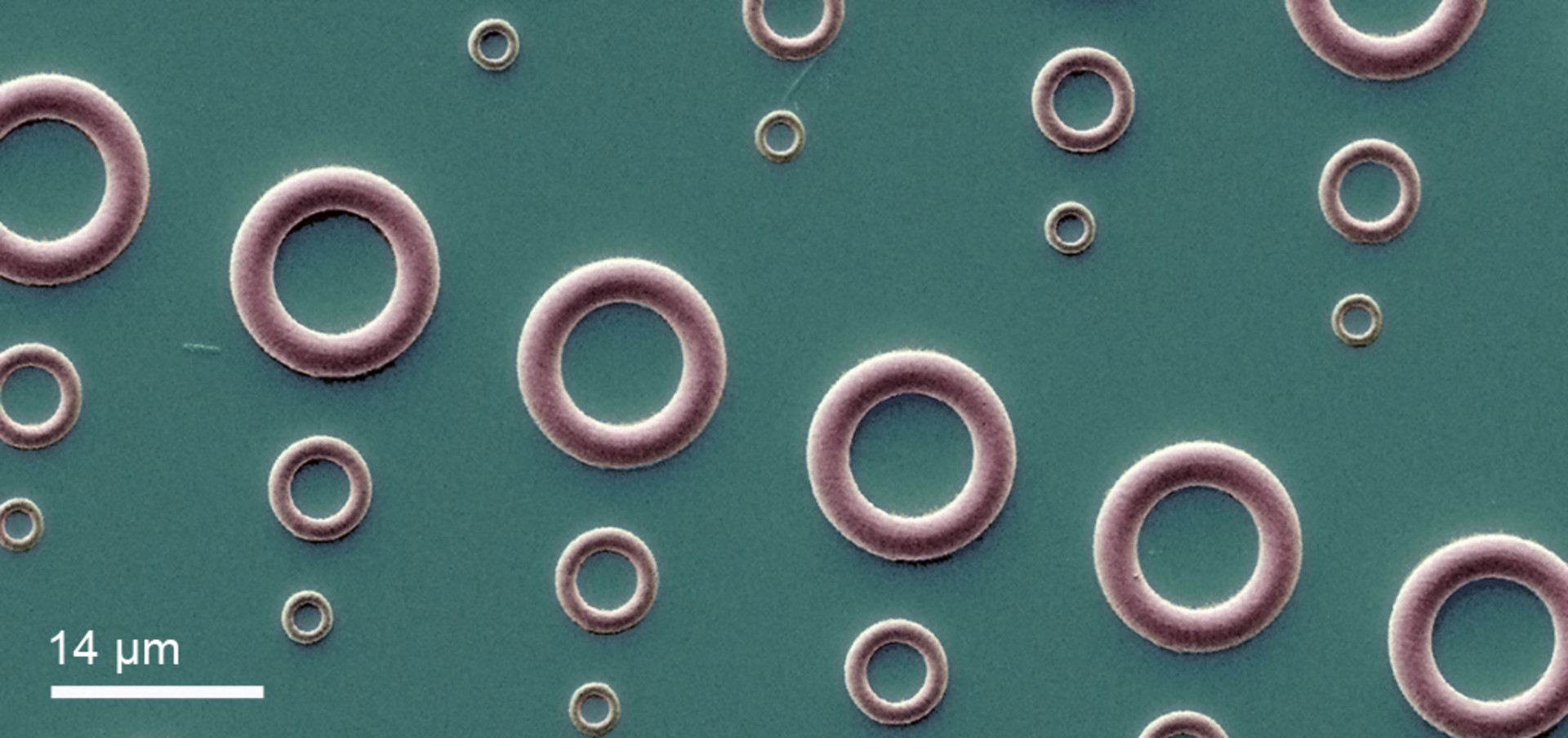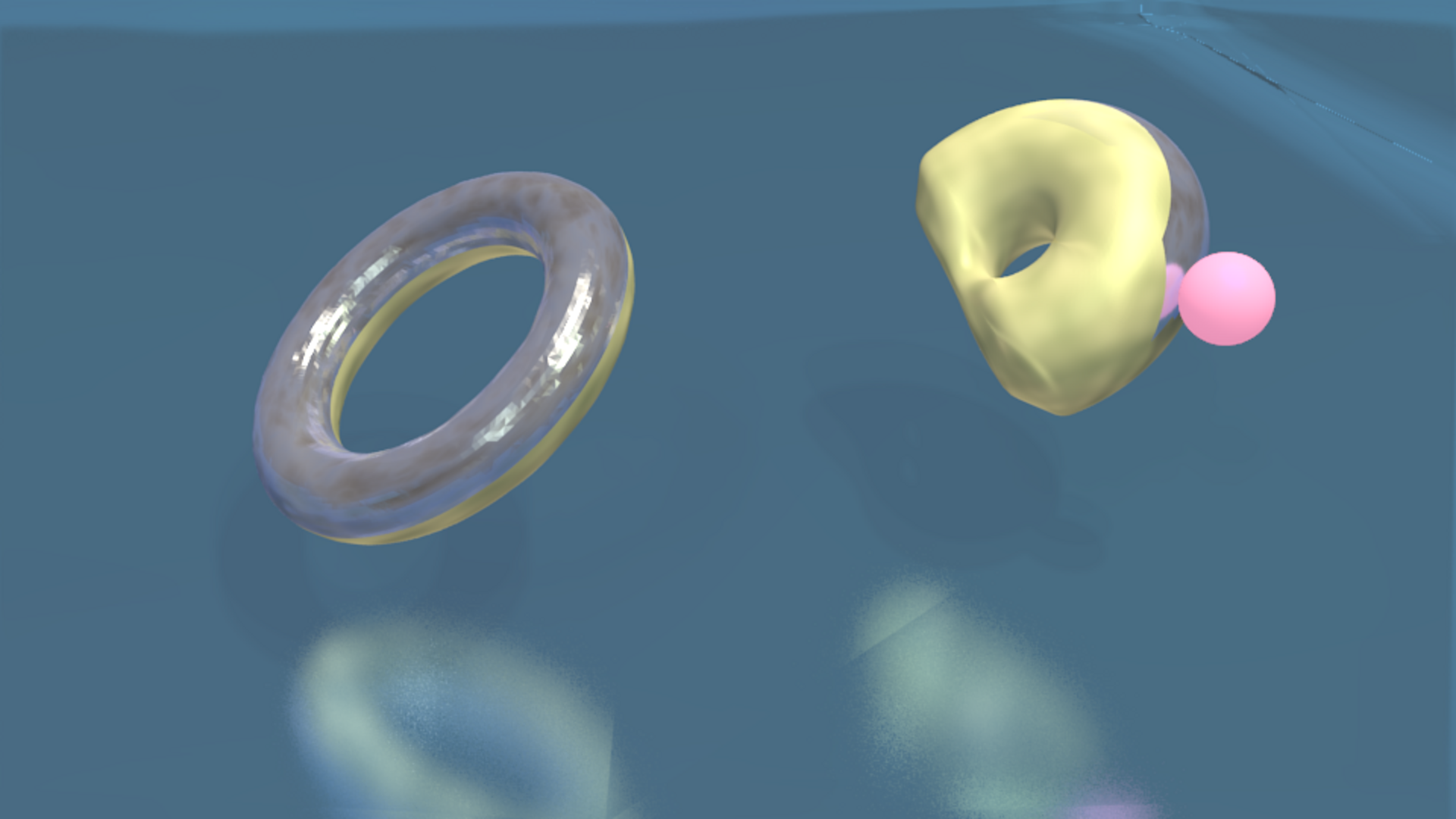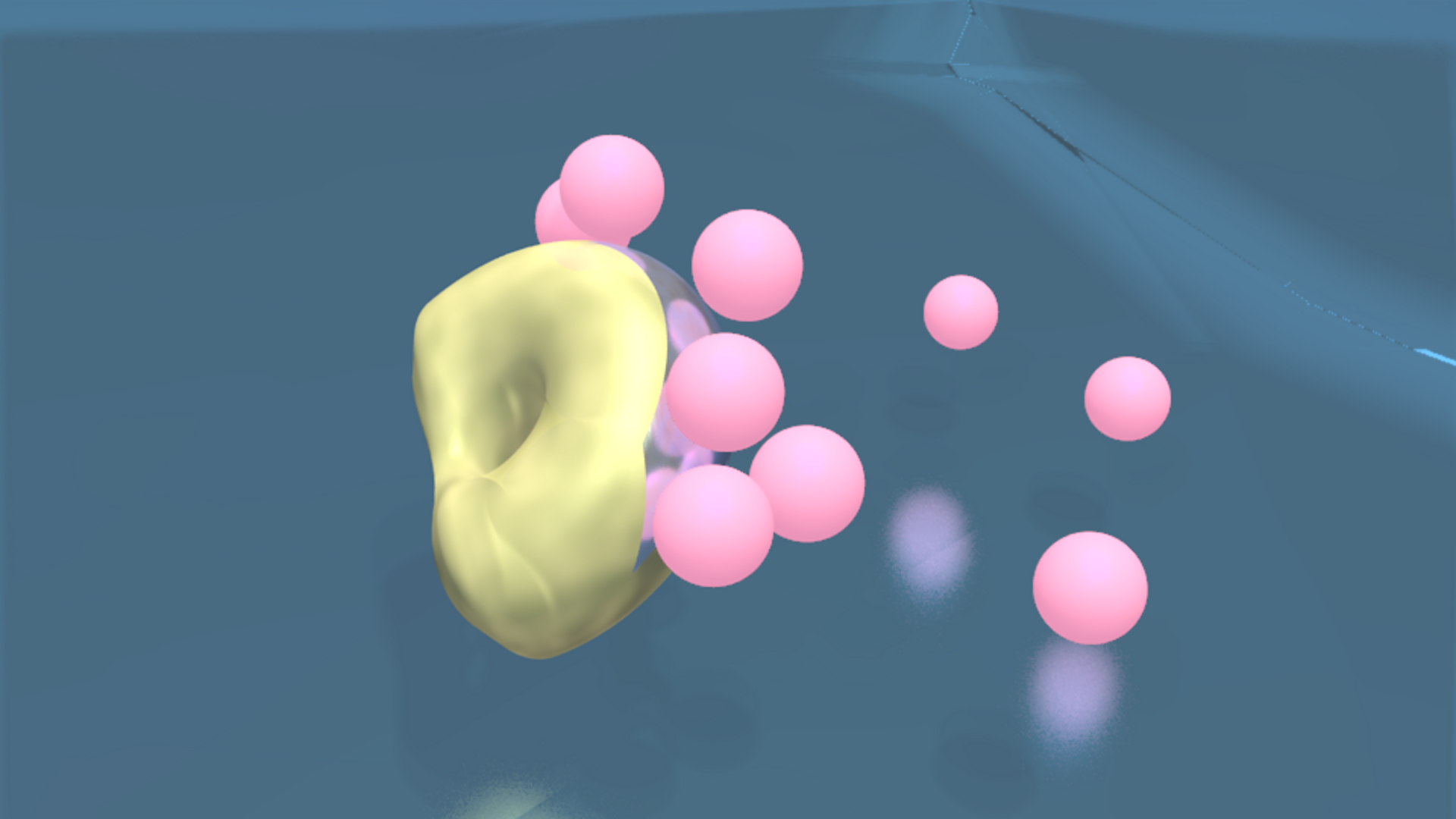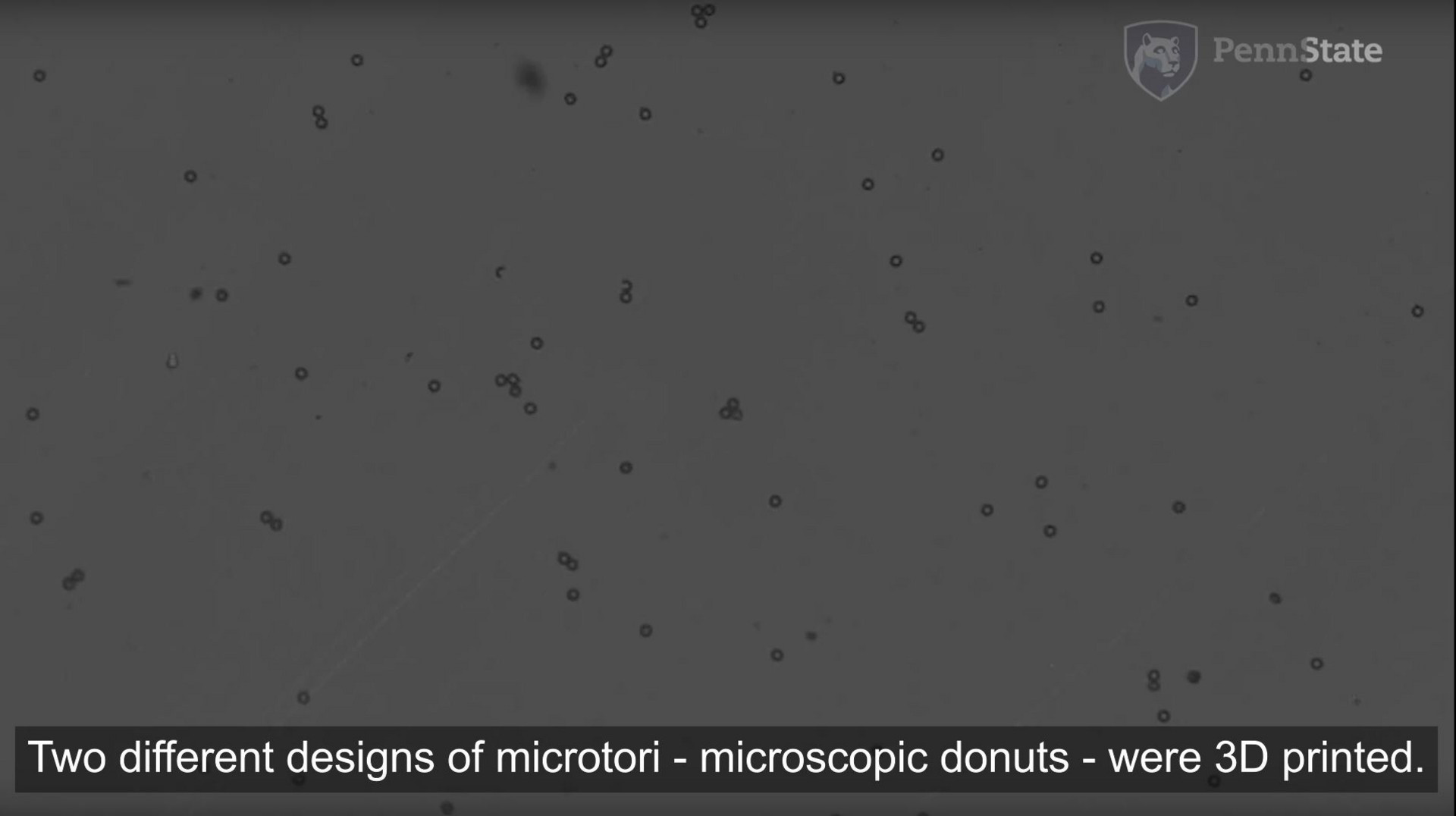Scientists from the Pennsylvania State University, the University of Birmingham, the University of Cambridge and the University of Toronto fabricated microscopic tori that mimicked behaviors and responses found in microorganisms, such as bacteria and sperm. The team utilized 3D structural design opportunities, 3D Microfabrication technology of Nanoscribe and unique nanoscale properties of several materials to program specific responses into the tori. As published in Nature Communications, the research team 3D printed microtori with diameters from 3 to 7 micrometers and feature sizes below 200 nm. The printed objects were then coated with nanometer-thick layers of nickel and platinum for specific functionalization, such as required response to magnetic field and catalytic activity. The end result is a donut-shaped, artificial microswimmer that is both self-powered and behaves autonomously like their biological counterparts.
The additive manufacturing approach enabled to fabricate two different microtorus designs, combining the printing process with post-print functionalization. According to their shape and surface functionalization, the researchers modified and explored different swimming and cargo transport behaviors. From these findings, the microswimmers could be further investigated for multiple applications, e.g., for delivery of therapeutic drugs or cell transport or for fluid mixing in lab-on-chip systems.
Self-powered artificial microswimmers
One of the greatest challenges presented was how to power artificial microswimmers while retaining autonomous responses to different environmental stimuli, such as magnetic fields or chemical signaling. The microtori are too small to power by conventional means, such as an external battery. The researchers designed chemically-driven microtori that converted fuel in its surroundings (dissolved hydrogen peroxide) into mechanical swimming motion. They achieved this by functionalizing the surface of the tori with thin layers of magnetic nickel and then chemically reactive platinum. When immersed in water, the microswimmers are inactive. However, when hydrogen peroxide is added, the microtori “turn on.” The platinum converts the energy in the hydrogen peroxide fuel into controlled swimming.





